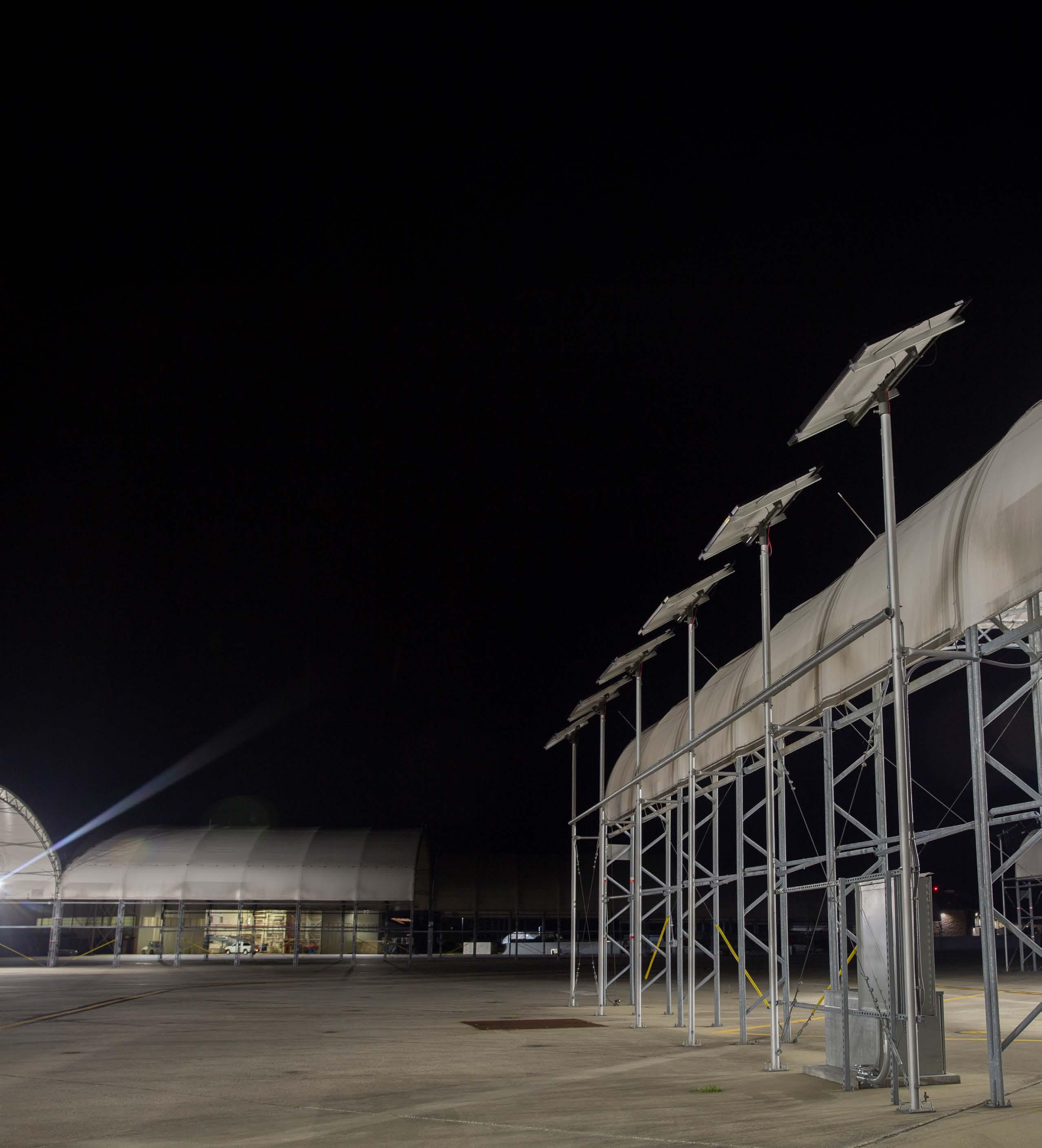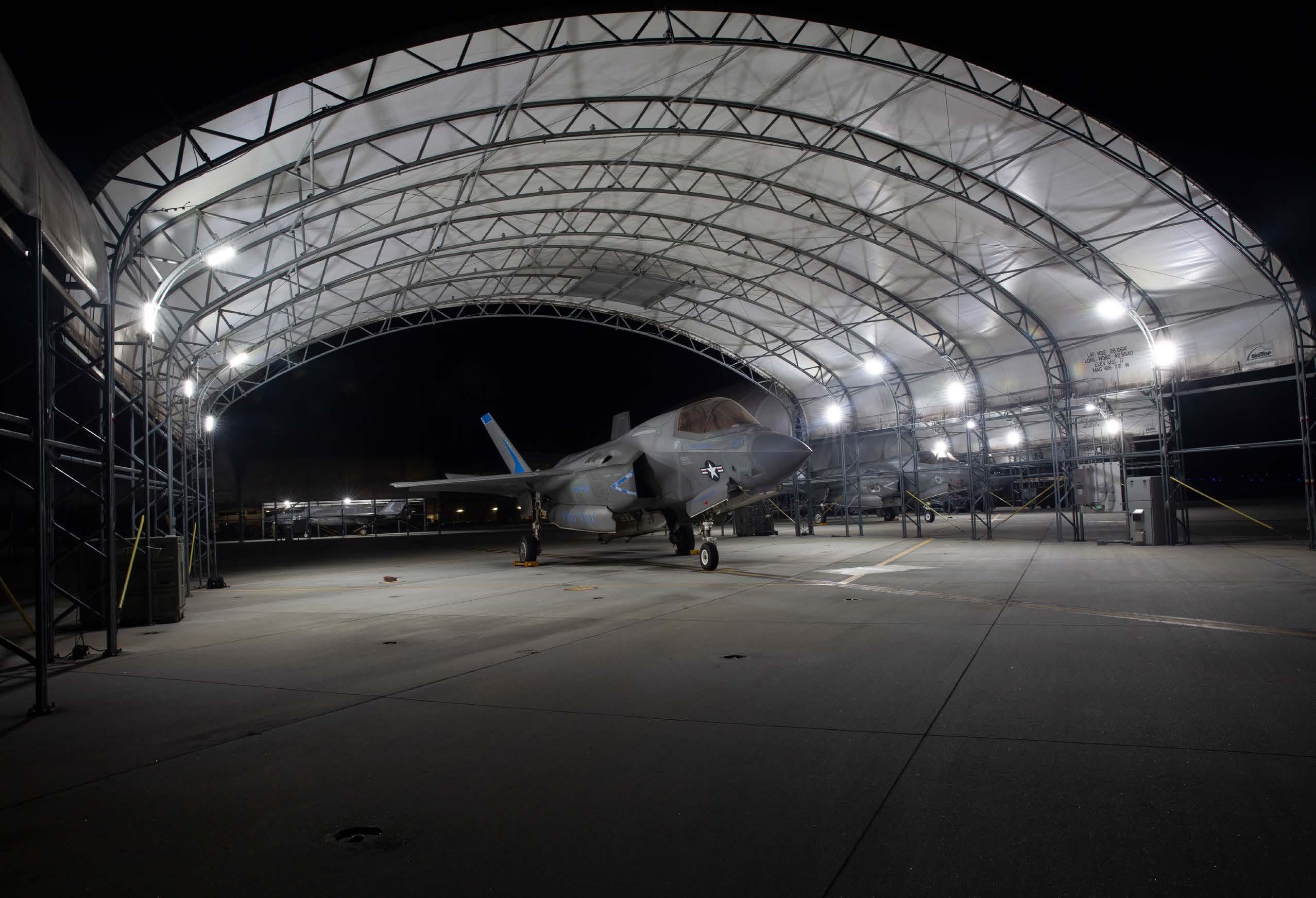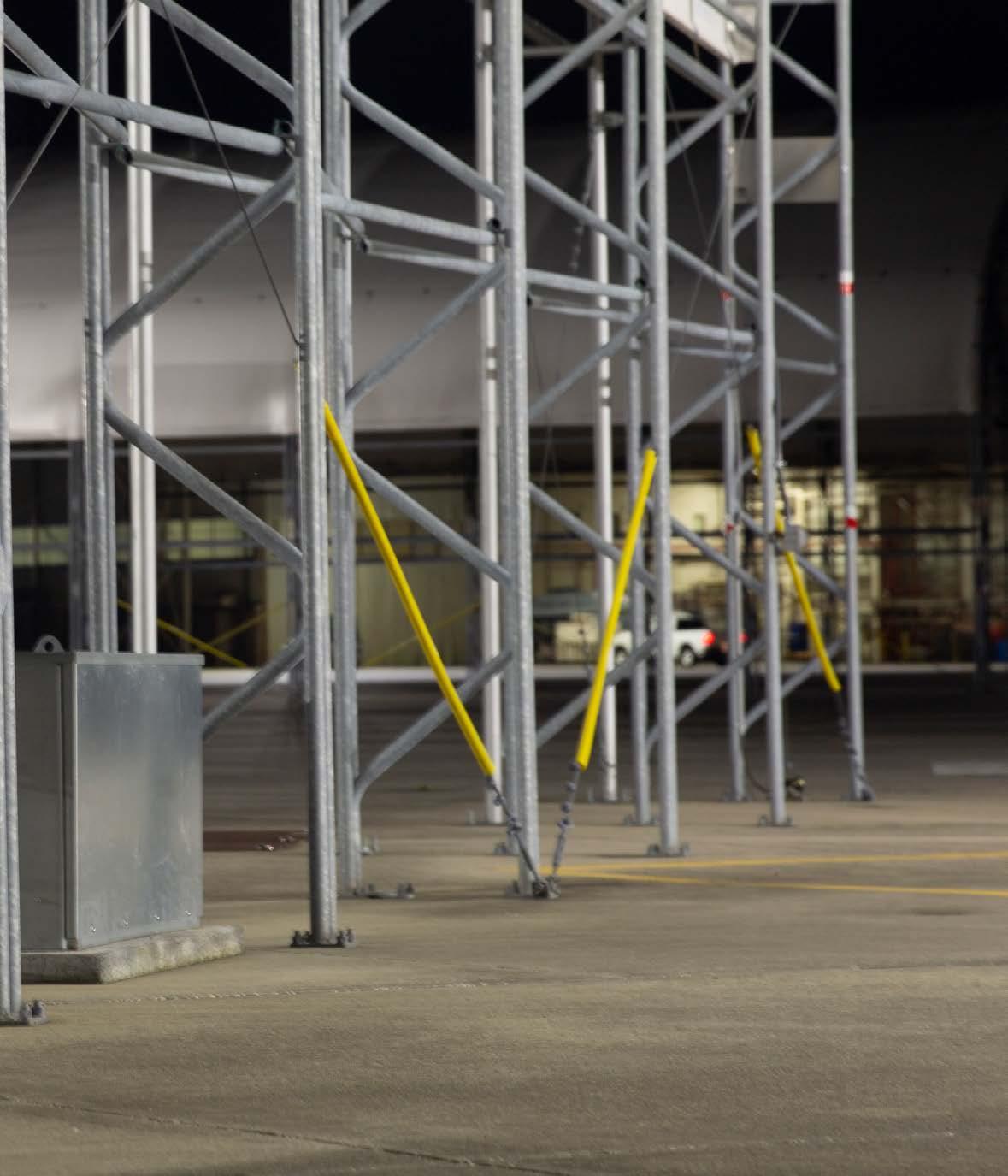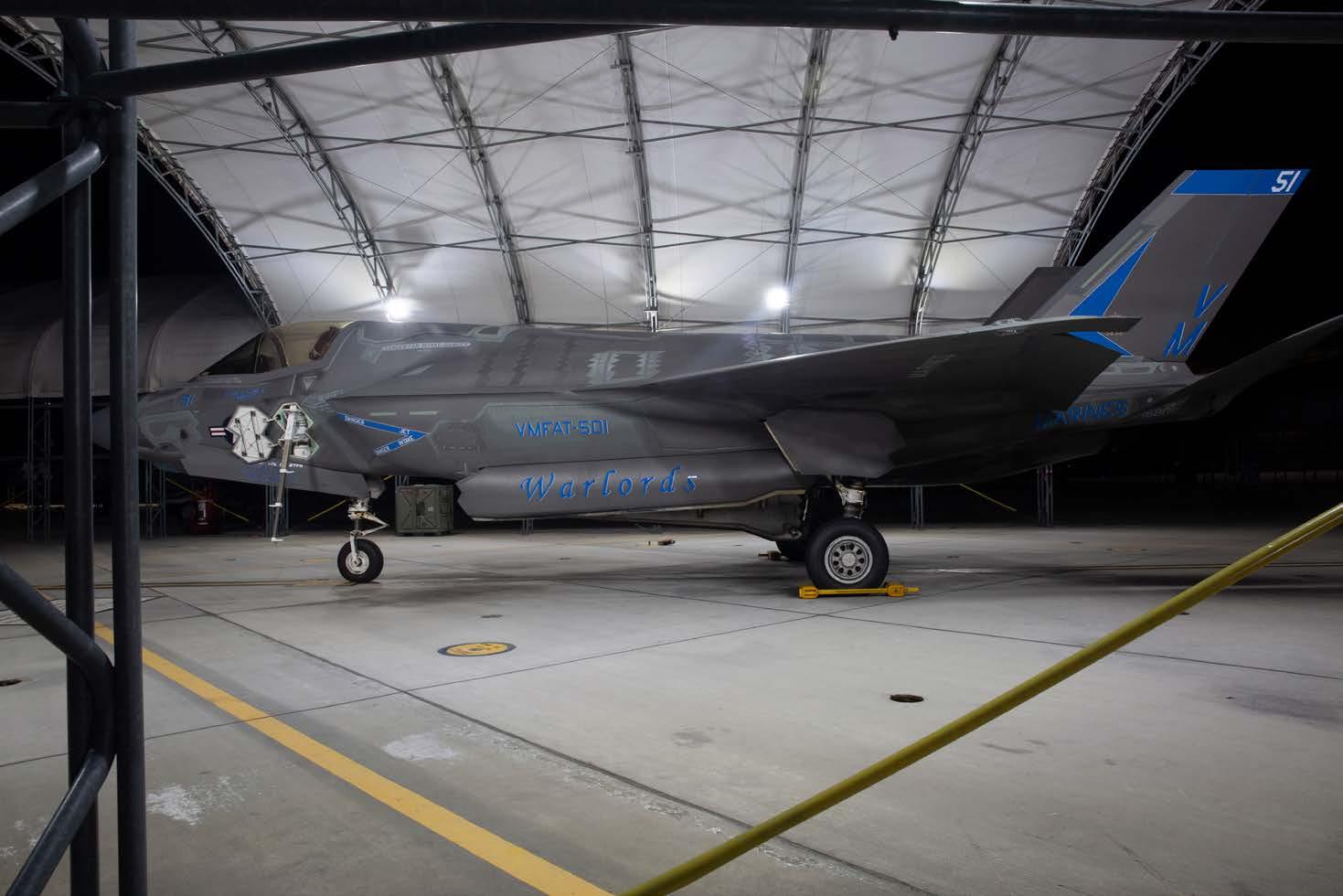
4 minute read
Flying High with Solar Power
Cover Photo: Six solar PV cells provide power to over 1,000 pounds of batteries, which are then used to power lights and tools for maintenance.
Woodstone Energy and Stones River Electric Deliver Unique Solution to MCAS Beaufort
By Parker Allen
Photos courtesy of Stones River Electric
Upon completion of a previous task order at Marine Corps Air Station (MCAS) Beaufort, Woodstone Energy (WSE) and Stones River Electric (SRE) were made aware of operational concerns concerning the protective solar shades that house the base’s planes.
MCAS Beaufort, home to multiple squadrons of F-18 and F-35 fighter jets, required enhanced lighting and power accessibility under the existing solar shade canopies used to house the jets. The absence of proper lighting during nighttime maintenance, as well as the lack of convenient power sources, presented operational challenges for the base.

A traditional solution, estimated at over $2 million, involved digging up the concrete to run electrical conduit across the tarmac to the canopies. WSE and SRE devised an innovative alternative using solar PV and battery storage systems to power LED lighting and equipment at a fraction of the cost.
The project included six new standalone shade structures with solar PV systems, battery storage, convenience receptacles, and LED lighting with controls. An additional eight structures, which already had existing receptacle power, were retrofitted with the same solar PV, battery storage, and LED solutions.
The new lighting design, delivering an average of 10 foot-candles on the work surface, ensures visibility for maintenance crews while minimizing energy wastage through advanced lighting controls.
Each structure is equipped with a 1.77kW solar PV system and significant industrial lead-acid batteries, which can power operations for three days without sunlight, meeting the base’s resiliency standards. The system also complies with FAA specifications, the Navy’s Unified Facilities Criteria, and local building codes. This solution not only avoids significant upfront costs but also creates a scalable model for future installations at other locations.

A SUCCESSFUL, SCALABLE MODEL
WSE and SRE’s solution not only saved over $1.6 million in costs but also represents a model that can be replicated elsewhere.
The simplicity of solar projects, combined with advancements in battery storage and LED technology, offers contractors the ability to implement similar systems in settings more common than military bases – settings such as commercial parking lots. The standalone nature of the installation avoids the need for extensive infrastructure work, such as tearing up concrete to install conduit.

CHALLENGES OF SOLAR TECHNOLOGY
While solar PV and battery storage solutions are becoming more viable, there are still cost considerations. The efficiency of solar panels is typically around 23-28%, and incorporating batteries increases the overall price. However, for projects like MCAS Beaufort, where traditional electrical solutions would require extensive groundwork, solar becomes the more economical and efficient choice. The installed leadacid batteries, while requiring some maintenance, provide a cost-effective solution for this project, though more advanced solid-state batteries could offer even greater efficiency at a higher price point in the future.

THE FUTURE OF SOLAR INSTALLATIONS
As the solar and battery markets evolve, the balance between cost, efficiency, and practicality continues to shift. While solar technology may not always offer the most attractive ROI for standard projects, in scenarios where traditional infrastructure is too costly or disruptive, it presents an increasingly competitive option. For contractors and energy managers, learning to navigate the nuances of these technologies will be key to successfully executing future projects.






